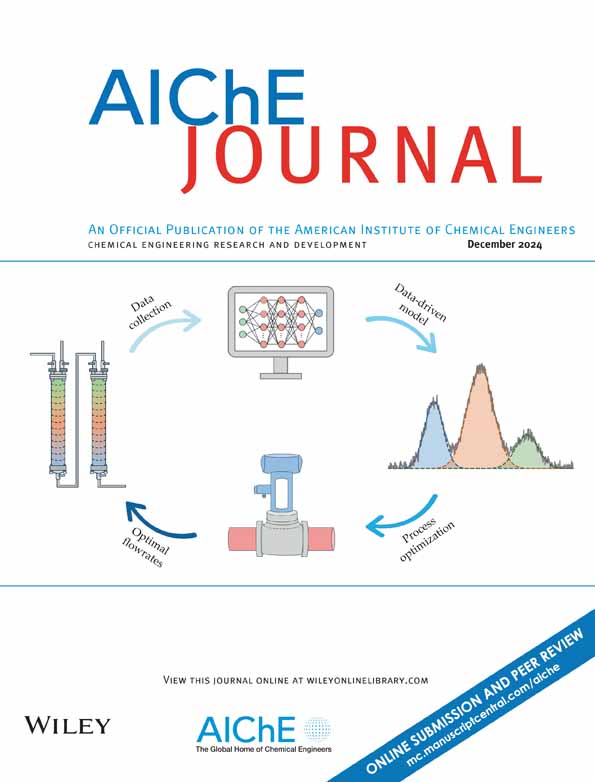Gas–liquid mass transfer enhancement by simply modifying a T‐junction microchannel
IF 3.5
3区 工程技术
Q2 ENGINEERING, CHEMICAL
引用次数: 0
Abstract
Improving the gas–liquid mass transfer rate in microdevices is essential for enhancing chemical reaction performance, but it has traditionally required high energy input or complex device fabrication. This study reports superior gas–liquid mass transfer performance in a newly designed T‐junction microchannel with a simple structure. Compared with the mass transfer contribution of approximately 30% in a conventional T‐junction microchannel, the contribution of the bubble generation stage in the modified device ranges from 50%–80%. The parameters of bubble generation frequency and liquid slug length are studied to identify the mechanism underlying the enhanced performance. Importantly, through a self‐developed image recognition system with high temporal and spatial resolution, this study reveals that the liquid‐side mass transfer coefficient not only depends on operation parameters but also relies on bubble residence time. Finally, considering channel length and mass transfer time, a new semi‐empirical model is developed.通过简单修改T结微通道增强气液传质
提高微器件中的气液传质速率对于提高化学反应性能至关重要,但传统上需要高能量输入或复杂的器件制造。本研究报告了新设计的结构简单的T结微通道具有优异的气液传质性能。与传统T结微通道中约30%的传质贡献相比,改进器件中气泡产生阶段的贡献在50%-80%之间。研究了气泡产生频率和液塞长度等参数,以确定性能增强的机理。重要的是,通过自主开发的具有高时空分辨率的图像识别系统,本研究揭示了液侧传质系数不仅取决于操作参数,还取决于气泡停留时间。最后,考虑通道长度和传质时间,建立了一个新的半经验模型。
本文章由计算机程序翻译,如有差异,请以英文原文为准。
求助全文
约1分钟内获得全文
求助全文
来源期刊

AIChE Journal
工程技术-工程:化工
CiteScore
7.10
自引率
10.80%
发文量
411
审稿时长
3.6 months
期刊介绍:
The AIChE Journal is the premier research monthly in chemical engineering and related fields. This peer-reviewed and broad-based journal reports on the most important and latest technological advances in core areas of chemical engineering as well as in other relevant engineering disciplines. To keep abreast with the progressive outlook of the profession, the Journal has been expanding the scope of its editorial contents to include such fast developing areas as biotechnology, electrochemical engineering, and environmental engineering.
The AIChE Journal is indeed the global communications vehicle for the world-renowned researchers to exchange top-notch research findings with one another. Subscribing to the AIChE Journal is like having immediate access to nine topical journals in the field.
Articles are categorized according to the following topical areas:
Biomolecular Engineering, Bioengineering, Biochemicals, Biofuels, and Food
Inorganic Materials: Synthesis and Processing
Particle Technology and Fluidization
Process Systems Engineering
Reaction Engineering, Kinetics and Catalysis
Separations: Materials, Devices and Processes
Soft Materials: Synthesis, Processing and Products
Thermodynamics and Molecular-Scale Phenomena
Transport Phenomena and Fluid Mechanics.
 求助内容:
求助内容: 应助结果提醒方式:
应助结果提醒方式:


